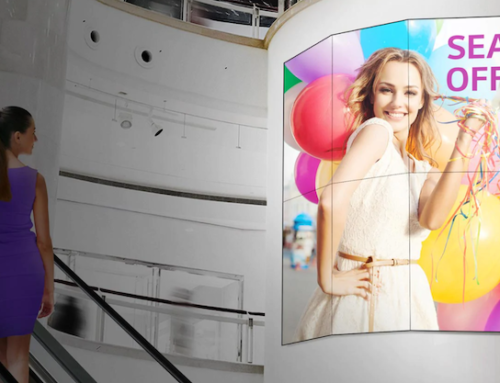According to Ryno Colyn, Head of Moving Tactics’ Digital Content, marketers need to understand their digital signage technologies before planning major marketing projects.
Strategic content development involves planning your annual marketing calendar in advance to focus on specific campaigns that will stand out from the rest. Knowing your network is key as technical advances, or limitations, will inform your marketing opportunities. The challenge is, after all, serving the most engaging information to the right audience at the right time.

How do you entice your customers to engage with your brand and, most importantly, act on the messages being sent? What will make the content pop? The starting point is using a digital signage network that employs System-on-Chip (SOC) technology. This facilitates media players being built into the screens, which leads to less downtime and technical problems, resulting in a more streamlined installation that saves on costs.
Screen Takeovers
The capability to perform screen takeovers across all digital screens is key and SOC solutions make it possible for digital screens to sync to the millisecond across regional, national or international locations. This technique proves highly effective for promotional content and is visually unmatched. It offers the utmost engagement and ‘WOW’ factor for an audience.
Quick-Service Restaurant (QSR) are used by chains across South Africa such as McDonald’s, Edgars and Famous Brands. Within the QSR space, the screen takeover is incorporated into the menu panels. Takeovers can be scheduled according to day-parting, such as for breakfast and lunch timeslots, and they are specifically timed to not be too invasive for ordering customers.
Time/Weather-Based Content
Having the ability to upsell or change buying decisions is vital for any brand. One way of doing this is to offer the correct product based on external factors, such as time of the day or the weather. Many external aspects determine people’s buying habits, from time of day and day of the month to being location-specific such as the store’s location or local weather. Some of these factors are controllable, and an intelligent digital signage system should be able to automatically change content based on the time of day or the weather outside, whether it be at an individual store or in a general area.
Bespoke content based on location data is proving more popular and can be built into the planned marketing strategy many months ahead of time. This technology enables clothing retailers to feature summer-friendly clothing if it’s a hot day, or restaurants to upsell coffee with their meals on a cold day rather than cold drinks, automatically.






